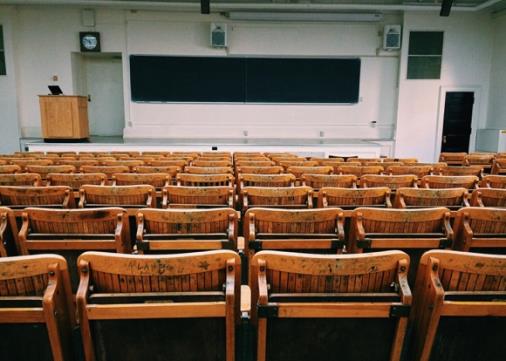
Under the pandemic, religious leaders who work in higher education are facing new challenges that may endure even beyond the drastically changed conditions they and students will encounter in the fall, reports The Revealer magazine (July 14, 2020). As universities suddenly ended their in-person classes, campus religious leaders had to determine quickly how they were going to support students through grief and anxiety and provide them with a sense of community. Kate Breslin writes that college students experienced “an unprecedented spike in depression, anxiety and loneliness” during the first months of the pandemic. It is not difficult to imagine why students had a challenging time. Instead of going on spring break, many students faced the upheaval of moving off campus with limited notice and, in turn, leaving behind the support structures that helped them.” At the University of Chicago, the Office of Spiritual Life made their programs equally accessible by the click of a button. Chaplains changed the categories on their campus page to prioritize resources for students with problems in the switchover to remote learning. Students could join a twenty minute still meditation or go to a regular virtual check-in with Spiritual Life staff via Zoom. An increase in anxiety and depression that exceeded the capacity of mental health services, also brought chaplains into this area of need, as well as pastoral counseling. The need to support students was greater than ever.
 The communal dimensions of religion on campus obviously changed with the onset of the pandemic, but chaplains sought to connect often isolated students with rituals and service from a distance. But now chaplains are trying to figure out the logistics of prayer and other spiritual practices on campus as many colleges reopen in the fall. One chaplain asks, “How many students would be able to participate in that? Are we going to have to have two or three services that we don’t pass that limit or what is going to be limited? And then usually when we pray, we stand next to each other. But some mosques are resuming prayers now and they are now…praying six feet away from each other while it was always shoulder to shoulder. It’s just the new reality. We have to adjust to it.” Breslin concludes that students returning to campus this fall, either online or in-person, “will find a different religious life experience than the one they saw one year ago. Every religious leader working in higher education I met shared the same message: there is no going back to the way things were before the pandemic. Campus ministries have changed remarkably in the past several decades to meet the needs of religiously, culturally, and sexually diverse student populations. The lessons learned in the pandemic have become the blueprint for how to meet the needs of college students in the twenty-first century.”
The communal dimensions of religion on campus obviously changed with the onset of the pandemic, but chaplains sought to connect often isolated students with rituals and service from a distance. But now chaplains are trying to figure out the logistics of prayer and other spiritual practices on campus as many colleges reopen in the fall. One chaplain asks, “How many students would be able to participate in that? Are we going to have to have two or three services that we don’t pass that limit or what is going to be limited? And then usually when we pray, we stand next to each other. But some mosques are resuming prayers now and they are now…praying six feet away from each other while it was always shoulder to shoulder. It’s just the new reality. We have to adjust to it.” Breslin concludes that students returning to campus this fall, either online or in-person, “will find a different religious life experience than the one they saw one year ago. Every religious leader working in higher education I met shared the same message: there is no going back to the way things were before the pandemic. Campus ministries have changed remarkably in the past several decades to meet the needs of religiously, culturally, and sexually diverse student populations. The lessons learned in the pandemic have become the blueprint for how to meet the needs of college students in the twenty-first century.”